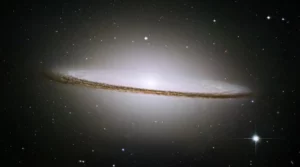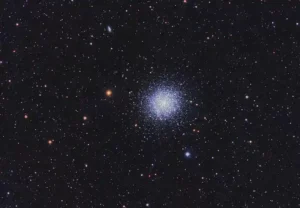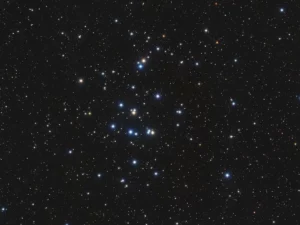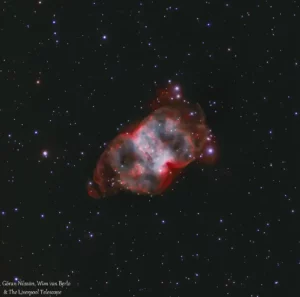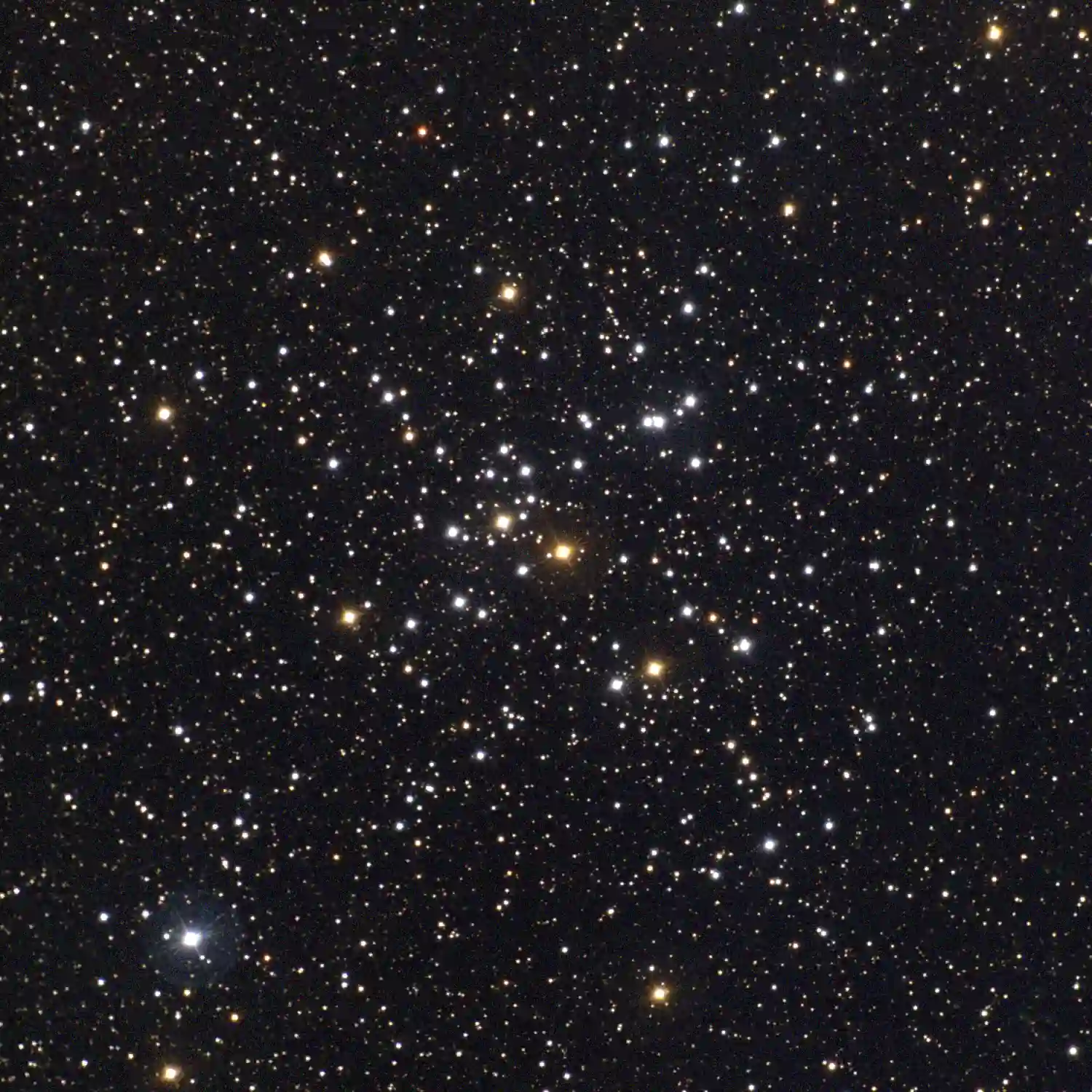
M41 – Open Cluster in Canis Major
M41 is one of the deep sky showpieces of winter, a beautiful open star cluster first documented in 320 B.C. by Aristotle.
Finding it is extremely easy: center Sirius in your eyepiece’s field and from here move the telescope four degrees south. However, before you do this first take a quick look at Sirius. It is the brightest star in the night sky, a hot sun 1.8 times as large and 24 times as luminous as our Sun. It is also the closest naked-eye star visible from midnorthern latitudes, located just 8.6 light-years away.
Shining at magnitude 4.6 M41 is visible with the naked-eye on clear nights and is partially resolvable into stars with binoculars. The cluster contains about 25 bright stars and many fainter ones scattered in a field of 30 arcminutes, as large as that covered by the Full Moon. Because it has such a large angular diameter M41 is best seen with a quality refractor equipped with a width-field, low-power eyepiece.
After you have the cluster centered in the field, look carefully and try to write what you see in your logbook. Is the cluster fully resolved into stars, and if so how many can you count? Can you see more star concentration in a specific part of the cluster?
Once you have these answered also look for a bright reddish star right in M41’s heart. This star is surrounded by lots of fainter ones that seem to be arranged in curving rows, a peculiar feature noted also in many other open clusters.
Note: The image used at the top of this article was taken by NOIRLab / NSF / AURA – https://noirlab.edu/public/es/images/noao-m41/

Emil, an avid astronomy writer, formerly owned and ran nightskyinfo.com, making the universe more comprehensible for his readers. He has recently handed over its reins to Tom Urbain from starlust.org, ensuring that his legacy of simplifying the stars continues to enlighten and inspire.
Discover More Deep Sky Objects to Observe🔭
This page is part of our collection of deep-sky objects articles. If you enjoyed the read, then you’ll love the following articles.

